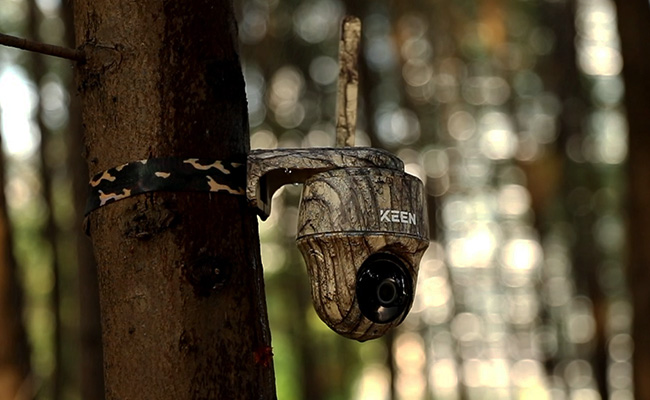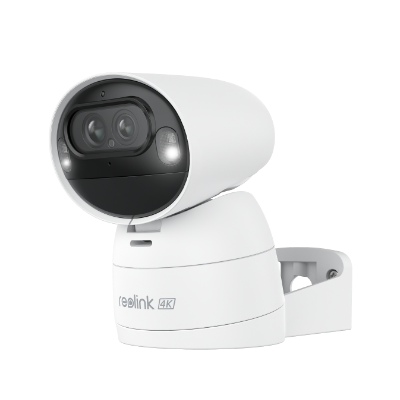How to Hide a Trail Camera From Humans?

One common tip you would hear among trail camera users is to always hide your cameras while using them in the field. It is a sensible tip, as there are a few reasons you should consider making your cameras less conspicuous. Hiding a trail camera keeps it safe from thieves who want the camera for themselves, trespassers, or poachers who want to hide evidence of their crime. Hidden trail cameras are also less likely to spook the game and are out of reach of curious animals that can cause damage by getting too touchy.
This article offers some of the best tips for hiding your trail cameras. Read on to learn how to keep them safe during use!
How to Hide a Trail Camera: Top 14 Effective Ways
Sometimes, using hidden trail cameras can help you watch outdoors better. Here, we give you 14 good ways to hide them.
1. Talking to locals
If you are setting up your camera in unfamiliar territory, one of the best things you can do is talk to locals.
A brief interaction with the local community can educate you on poaching and other criminal activities in the area, the best spots to set up cameras for wildlife footage, and other valuable tips.
2. Place the camera above eye level
Humans are less likely to look above their heads when walking, especially on uneven ground like in the woods. You can take advantage of this fact by placing your trail camera high up in the trees or any elevated spot.
Setting the camera above the line of sight makes it much harder for people to spot. Even if they find the camera, it will take some effort to get to it and could discourage them from reaching it. For effective outdoor surveillance, consider mounting security cameras 10 to 12 feet (3 to 3.7 meters) above ground level. This height provides a balanced view and minimizes blind spots. As an illustration, the Reolink Argus Track, equipped with dual lenses and optical zoom, can be positioned slightly higher. This strategic placement ensures optimal auto-zoom tracking capabilities, allowing the camera to focus precisely on any detected movement.
4K Dual-Lens Wi-Fi Solar/Battery Camera
4K 8MP Ultra HD, Auto-Zoom Tracking, Pan, Tilt & 6X Hybrid Zoom, Color Night Vision, Dual-Band Wi-Fi.
3. Avoid visiting your cameras too frequently
Checking your cameras too often can make others curious about what is going on. Time your visits to your camera strategically and only go when necessary.
4. Use decoy cameras
You can use a decoy camera to distract attention from your main camera.
Typically, you should only use cheap, low-quality cameras or old ones as decoys in case they get stolen or damaged.
Set up the decoy in a visible yet not too obvious location, but make sure it is still within the focus of your primary camera that is better hidden. This would help you get footage evidence of whoever tampers with it.
5. Be creative with your hiding spots
If you are hiding your cameras from humans rather than animals, you would need to be clever when selecting a hiding spot.
In cases like this, you can leverage the natural environment by hiding the camera in rotting tree stumps or a fallen tree trunk. If the stump is large enough to accommodate the camera, the moss and bark will help conceal it from view. Additionally, the hollowed-out interior of the stump could offer protection from the elements.
You can also hide your cameras in birdhouses, mailboxes, flower pots, fake rocks, hanging baskets, or other artificial structures that blend into the landscape well enough.
6. Camouflage the camera with the environment
You can use the environment to mask your camera's presence when trying to keep it hidden.
This would involve using leaves, vines, branches, foliage, or even a bird's nest to camouflage your camera and hide it from view. When using this method, always confirm to ensure the camouflage does not block your camera's view.
If you want to use DIY skin for your security camera, consider the Reolink Go PT Ultra, a versatile 4G cellular security camera. Not only does it offer impressive 4K 8MP resolution, but it also features pan-and-tilt capabilities, allowing you to cover a wide outdoor area. Plus, you have the option to customize its appearance by applying your preferred skin. This camera is particularly well-suited for outdoor locations where Internet connectivity is unavailable.
4K 8MP Wire-Free 4G LTE PT Battery Camera
4K 8MP; Smart Detection; 355° Pan & 140° Tilt; Battery/Solar Powered; Color Night Vision; Smart Real-Time Alert.
7. Using fake leaves
These leaves can be purchased from craft stores and are usually made of fabric or paper. Unlike real leaves, they won't rot or fall off, so they last a bit longer.
You can use hot glue or double-sided tape to attach the leaves to the camera. Just be sure to buy leaves that match the ones in the area you'll be mounting the camera. Otherwise, they'll stand out and give away the location of your camera.
8. Painting your camera
Most trail cameras come with camouflage paint to help them blend in with their surroundings. However, if the original camera paint does not work for you, you can always repaint it to blend in with its location.
A general tip is to use a light colour for areas with lots of vegetation and darker colours for more open spaces. Place the camera around leaves and bushes to get the best of the body paint.
9. Turn off the flash or use a camera without infrared lights
Trail cameras usually use flash or red infrared lights to help when visibility is low. The problem with this feature is that the lights can spook animals away and give away your camera's hiding spot.
To avoid this, you can always turn off or lower the light settings on your camera. Better yet, consider using "No-glow cameras" with infrared lights that are invisible to the eye.
10. Choose a smaller camera
You can also choose a small-sized camera if you plan to hide it from humans. Such cameras are difficult to spot and are even easier to hide.
Camera size does not necessarily affect performance. There are many small-sized cameras on the market that will still provide you with high-quality images and footage.
11. Install your cameras in low-traffic areas
Aside from the fact that installing your camera in low human traffic areas can keep your cameras safe, they also increase your chances of getting wildlife footage. Animals will generally stay away from locations frequented by humans; you could set up a camera in such areas and end up without any footage.
You can also set up your cameras in spots that are difficult to access – think a thorn bush. An uncomfortably placed camera would discourage anyone from messing with them.
12. Lock your cameras in a mounting box
You can keep your cameras in a sturdy, safe box with a protective lock while setting them. Admittedly, this could be more expensive, but it is definitely worth the cost as it would require more trouble to steal the camera. It could even discourage the would-be thief in the process.
13. Clear tracks or trails leading to your cameras
After installing your cameras, you should remember to clear trails or tracks leading back to them. To illustrate why, footprints in the snow or mud could lead a curious trespasser directly to the camera, making it easier for them to steal or damage it.
Finally, avoid checking the game camera immediately after heavy rain or snow. Doing so will create new footprints that could lead someone directly to your camera.
14. Be discreet about revealing your camera positions
The fewer people who know the location of your trail camera, the better. If you share photos with others or on social accounts, double-check that GPS coordinates are not shown on the picture, as they can be traced back to locate your cameras. You can never be too careful.
Tips for Setting Up Hidden Trail Cameras
Trail cameras are great tools for anyone to get glimpses into the habits of wild animals. Still, it's essential to follow some basic guidelines to get the most out of the camera and ensure it doesn't end up being more trouble than it's worth.
-
First, always wipe your trail camera with a cloth to eliminate your scent after handling it. Human scent can spook animals, and they're likely to bolt if they catch a whiff of you before they come into view the camera.
-
Secondly, invest in a good security box and lock for your trail camera. Python cable locks are great because they're difficult to cut, but any lock will do. You don't want your camera stolen - or worse, mistaken for a poacher's trail camera and confiscated by the authorities.
-
Finally, be sure to adjust the trail camera mount so that the camera is pointing at the ground at a slight angle when you set it high up. You don't want your pictures and videos to be just of the trees and sky.
Who is a trespasser? Why use cameras against them?
A trespasser is someone who enters another person's property without permission. In some places, trespassing is considered a crime.
Trespassers can be more than a nuisance and pose a safety risk to a property and its inhabitants, as there are recorded cases of them damaging the property or attacking people.
Using trail cameras on your property can serve as a deterrent to trespassers, keeping the property safe. At the same time, footage from the camera can also be used as evidence of criminal activities to apprehend trespassers.
Safety tips for handling trespassers
-
If you see signs of a trespasser on your camera, make sure you are in a safe place before calling the police—request help after checking to see if there has been a break-in.
-
You can also deter trespassing by using security lights and visible surveillance warning signs. This will let potential trespassers know that you are taking action to protect your property.
Conclusion
Honestly, there is not much you can do to prevent a determined person from stealing your camera. However, that doesn't stop you from making their mission as difficult as possible. Follow our provided tips to lower the risk of your cameras getting stolen or damaged.
Search
Be in the Know
Security insights & offers right into your inbox


